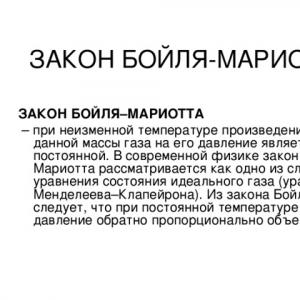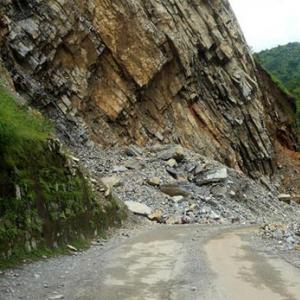Household water purification. Scientific and household water treatment methods
The presence of hard water in pipelines will be indicated by:
- white bloom on tiles and dishes;
- poorly flowing tap water;
- increased power consumption;
- frequent breakdowns of washing machines and other household appliances.
You can protect yourself from unpleasant consequences by softening the water and cleaning it from scale.
How to do it
Today, many methods of water purification and softening are used.
- Reverse osmosis systems
This technology allows you to purify water to a crystal state. Water passing through multiple membranes gets rid of impurities. The distillate is obtained at the exit. The main disadvantage of this method is that the water is also deprived of minerals. Among other disadvantages, it is worth noting:- Expensive equipment.
- The need for regular filter replacement.
- Filter jugs
They can be found in almost every apartment. More expensive filter jugs retain harmful impurities, dirt and even chlorine. Heavy metal salts will be present. - Three-stage cleaning system
It involves the installation of various filters installed in the water supply system. It is an effective method of descaling water. Further mineralization, in contrast to the reverse osmosis system, is not required. But there are also a number of disadvantages here. From time to time you will have to replace the cartridges and the system itself. - Unconventional methods
Often, owners of apartments and houses prefer this particular method, using:- Shungite.
- Activated carbon.
- Silicon.
- Silver.
- Mountain quartz.
- Acids (ascorbic, tartaric, citric, acetic).
Modern water treatment
Modern Systems has developed and patented the WaterMill anti-scale device. Treatment involves electromagnetic effects on water. Thanks to him, heating boilers are cleaned from scale and other household appliances and water is softened. Hardness salts will not settle on the walls of the equipment, and the existing deposits will gradually be removed.
 Household water is used constantly, but what flows from the tap is not always safe, therefore, in order to rid water of harmful impurities, there are certain ways to purify water in everyday life, for example: boiling, settling, freezing and filtration using various modern technologies.
Household water is used constantly, but what flows from the tap is not always safe, therefore, in order to rid water of harmful impurities, there are certain ways to purify water in everyday life, for example: boiling, settling, freezing and filtration using various modern technologies.
 BOILING The most affordable and widespread way of water purification in everyday life is, of course, boiling. It must be boiled for at least 15 minutes, then allow time to settle and cool before use. Due to prolonged boiling in water, many bacteria and microorganisms die, but still there are those that can withstand prolonged boiling. This method of purification makes the water softer, because hardness salts become insoluble and settle on the walls of the kettle, chlorine and other dissolved gases evaporate, but it is impossible to store such water for a long time, because bacteria quickly begin to multiply in it.
BOILING The most affordable and widespread way of water purification in everyday life is, of course, boiling. It must be boiled for at least 15 minutes, then allow time to settle and cool before use. Due to prolonged boiling in water, many bacteria and microorganisms die, but still there are those that can withstand prolonged boiling. This method of purification makes the water softer, because hardness salts become insoluble and settle on the walls of the kettle, chlorine and other dissolved gases evaporate, but it is impossible to store such water for a long time, because bacteria quickly begin to multiply in it.
 DEPOSIT It is also quite problematic to clean water in everyday life by means of sedimentation, because the water should be defended for at least 7 hours, but if you stand for more, then bacteria actively multiply in it. You can use only the upper layers of settled water, and the rest contains harmful substances, chlorine and other impurities. In addition, such water definitely needs additional processing, for example, boiling or freezing.
DEPOSIT It is also quite problematic to clean water in everyday life by means of sedimentation, because the water should be defended for at least 7 hours, but if you stand for more, then bacteria actively multiply in it. You can use only the upper layers of settled water, and the rest contains harmful substances, chlorine and other impurities. In addition, such water definitely needs additional processing, for example, boiling or freezing.
 FREEZING Another way to purify water in everyday life is freezing, and it is believed that pure water without impurities freezes first, and that is what people should use. The liquid that does not freeze contains impurities and must be discarded. Freezing is a good way of cleaning, softening, but a rather laborious and expensive process.
FREEZING Another way to purify water in everyday life is freezing, and it is believed that pure water without impurities freezes first, and that is what people should use. The liquid that does not freeze contains impurities and must be discarded. Freezing is a good way of cleaning, softening, but a rather laborious and expensive process.
 FILTERING Filtration is considered the most efficient and modern way of water purification. Experienced specialists select filters based on the quality of the source water to achieve the required degree of purification. Progressive innovative technologies reduce the concentration of contaminants and harmful substances, completely remove pathogenic microorganisms, bacteria and viruses. Mechanical filters allow to clear water from mechanical impurities - sand, scale and other mechanical debris. Filters with a reverse osmosis system allow softening and removing all unnecessary impurities.
FILTERING Filtration is considered the most efficient and modern way of water purification. Experienced specialists select filters based on the quality of the source water to achieve the required degree of purification. Progressive innovative technologies reduce the concentration of contaminants and harmful substances, completely remove pathogenic microorganisms, bacteria and viruses. Mechanical filters allow to clear water from mechanical impurities - sand, scale and other mechanical debris. Filters with a reverse osmosis system allow softening and removing all unnecessary impurities.
 WHAT FILTERS ARE: Sorption filters Reagent-free water deferrization filters Ion exchange Reverse osmosis filters UV and ozone filters
WHAT FILTERS ARE: Sorption filters Reagent-free water deferrization filters Ion exchange Reverse osmosis filters UV and ozone filters
 RETURN FILTERS The most modern filters for water purification. They use thin-film membranes with a cell size comparable to the size of a water molecule. Reverse osmosis filters are direct-flow and accumulative. Accumulative ones are more economical: water from them is drained into a special tank and used as needed. This makes it possible to reduce the membrane usage time and to use purified water more efficiently. Such filters are convenient to use in everyday life when water consumption is uneven throughout the day.
RETURN FILTERS The most modern filters for water purification. They use thin-film membranes with a cell size comparable to the size of a water molecule. Reverse osmosis filters are direct-flow and accumulative. Accumulative ones are more economical: water from them is drained into a special tank and used as needed. This makes it possible to reduce the membrane usage time and to use purified water more efficiently. Such filters are convenient to use in everyday life when water consumption is uneven throughout the day.
 ION EXCHANGE FILTERS The most versatile type of filter that uses ion-exchange resins. When water is passed through such a resin in the latter, calcium and magnesium ions are replaced by sodium and chlorine ions. Due to this, hard water softens, which creates a lot of problems when used without purification.
ION EXCHANGE FILTERS The most versatile type of filter that uses ion-exchange resins. When water is passed through such a resin in the latter, calcium and magnesium ions are replaced by sodium and chlorine ions. Due to this, hard water softens, which creates a lot of problems when used without purification.
 REAGENT-FREE FILTERS FOR WATER DEGREEZING The high content of iron, manganese and hydrogen sulfide in water gives it an unpleasant taste and smell, and also promotes corrosion of pipes and sanitary ware. To remove these substances from the water in the form of sediment, it is enough to provide an excess content of oxygen in it, which will trigger oxidative reactions. With air aeration The technology is based on the treatment of water with ordinary atmospheric air, which contains a sufficient amount of oxygen for the necessary oxidative reactions... With electrochemical aeration The technology is based on the transformation of chemical and electrical energy.
REAGENT-FREE FILTERS FOR WATER DEGREEZING The high content of iron, manganese and hydrogen sulfide in water gives it an unpleasant taste and smell, and also promotes corrosion of pipes and sanitary ware. To remove these substances from the water in the form of sediment, it is enough to provide an excess content of oxygen in it, which will trigger oxidative reactions. With air aeration The technology is based on the treatment of water with ordinary atmospheric air, which contains a sufficient amount of oxygen for the necessary oxidative reactions... With electrochemical aeration The technology is based on the transformation of chemical and electrical energy.
 SORPTION FILTERS Used both independently and as part of complex systems cleaning. The role of the filtering medium is played by activated carbon from coconut shells, the adsorption properties of which are 4 times higher than that of ordinary charcoal. Carbon filters can improve the taste, color, odor of water, remove residual chlorine, dissolved gases and organic compounds. When ion-exchange substances are added to coal, water can be purified from heavy metals, bacteria, pesticides, herbicides, asbestos, and oil products. Carbon filters, adsorbing organic matter, are a favorable breeding ground for microorganisms and bacteria, so they can only be used in conjunction with water disinfection systems.
SORPTION FILTERS Used both independently and as part of complex systems cleaning. The role of the filtering medium is played by activated carbon from coconut shells, the adsorption properties of which are 4 times higher than that of ordinary charcoal. Carbon filters can improve the taste, color, odor of water, remove residual chlorine, dissolved gases and organic compounds. When ion-exchange substances are added to coal, water can be purified from heavy metals, bacteria, pesticides, herbicides, asbestos, and oil products. Carbon filters, adsorbing organic matter, are a favorable breeding ground for microorganisms and bacteria, so they can only be used in conjunction with water disinfection systems.
 F- AND OZONE FILTERS These are disinfecting filters that kill bacteria and some viruses. Ozone tends to decompose in water with the formation of oxygen, which destroys the enzyme systems of microbial cells. Ozone filters are characterized by high energy consumption, require sophisticated equipment and qualified maintenance. They are most often used for water purification in swimming pools and medical institutions. High technological and operational characteristics are possessed by UV filters, which have become more widespread: they are installed in homes, cottages, laboratories, restaurants. They do not use reagents, which simplifies the cleaning process. Ultraviolet light has disinfecting properties, destroys not only vegetative, but also spore forms of bacteria and does not change the properties of water.
F- AND OZONE FILTERS These are disinfecting filters that kill bacteria and some viruses. Ozone tends to decompose in water with the formation of oxygen, which destroys the enzyme systems of microbial cells. Ozone filters are characterized by high energy consumption, require sophisticated equipment and qualified maintenance. They are most often used for water purification in swimming pools and medical institutions. High technological and operational characteristics are possessed by UV filters, which have become more widespread: they are installed in homes, cottages, laboratories, restaurants. They do not use reagents, which simplifies the cleaning process. Ultraviolet light has disinfecting properties, destroys not only vegetative, but also spore forms of bacteria and does not change the properties of water.
 Water is the basis of all organic life, without which neither human existence nor the development of humanity as a whole is possible. In addition to the immediate need to maintain the vital activity of the body, a person consumes large quantities of fresh water to maintain agriculture and provide for various domestic needs. Water covers more than 70% of the earth's surface and makes up about 1/4400 of the total mass of the planet, but fresh water accounts for less than 3% of its total amount. Moreover, about 70% of all fresh water is in the form of glaciers, which makes it difficult to use.
Water is the basis of all organic life, without which neither human existence nor the development of humanity as a whole is possible. In addition to the immediate need to maintain the vital activity of the body, a person consumes large quantities of fresh water to maintain agriculture and provide for various domestic needs. Water covers more than 70% of the earth's surface and makes up about 1/4400 of the total mass of the planet, but fresh water accounts for less than 3% of its total amount. Moreover, about 70% of all fresh water is in the form of glaciers, which makes it difficult to use.
Drinking water is vitally important for any person, and almost every student knows about it. No less well-known is the fact that it is best to use clean water, but the awareness of this fact, for some reason, does not make a common man in the street, in most cases, think about what kind of water he uses ?! It's not a secret for anyone that the water that enters our houses and apartments from the public water supply systems sometimes does not stand up to any criticism, which implies the need to install local (household) water purification systems.
They can be conditionally divided into two types: with and without filters. Water purification without the use of filters is most often used in private and country houses. It includes methods such as boiling, freezing and standing. These simplest methods of water purification make it possible to get rid of any impurities thereof, but sometimes they are not able to exclude the presence of all kinds of harmful bacteria in the liquid, chemical substances, and also, as in the case of boiling, they can completely "kill" in water all trace elements useful for our health.
That is why many experts believe that drinking water must undergo additional filtration. Water filters, in this case, may be different. The first option is filters in the form of jugs. They are filled with water, which passes through the carbon cartridge, after which it enters a special storage tank. The second option is tap nozzles. They are also equipped with a carbon cartridge through which water passes, but the efficiency of such cleaning is extremely low.
A more perfect way of water purification is the installation of flow-through filters for washing. Such systems can carry out cleaning in several stages, due to which the water will be cleaner. But no one will dare to guarantee the absence of viruses and bacteria in it.
As for the best option for water purification in a country house or city apartment, many experts believe that reverse osmosis filters can be classified as such. They produce structured water that gets rid of all impurities, viruses and bacteria, but retains all its natural qualities.
For any person, water is a vital product. That is why, the process of cleaning it in everyday life must be given paramount importance, because, often, what flows from the taps in our houses can be called clean water at a stretch. Water purification methods are different. Among the simplest are boiling, freezing and settling. They are mainly used to get rid of water from small impurities, for example, sand, and in the case of boiling, from microelements beneficial to human health. In this regard, the most effective way water purification seems to be filtration, especially when it comes to the use of special filters with reverse osmosis. They not only purify water, but also preserve all its natural beneficial qualities.







